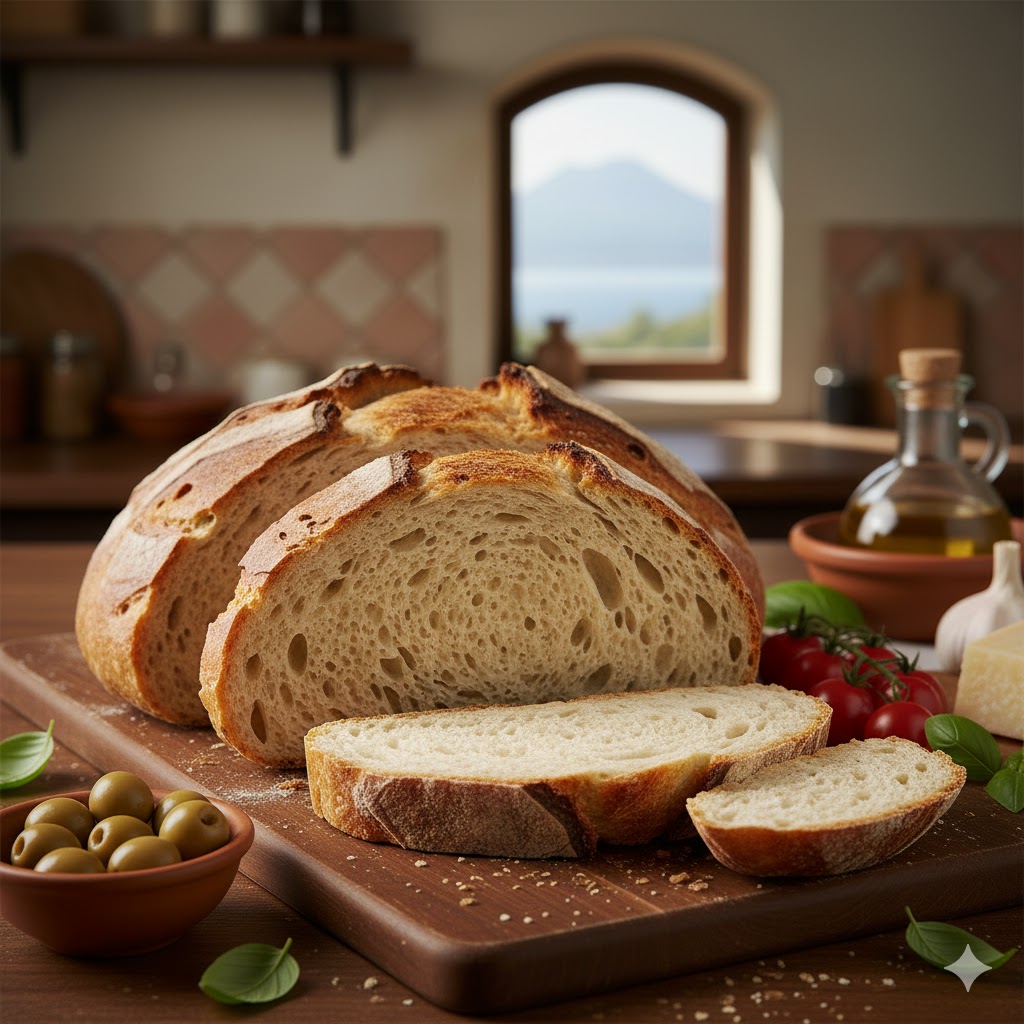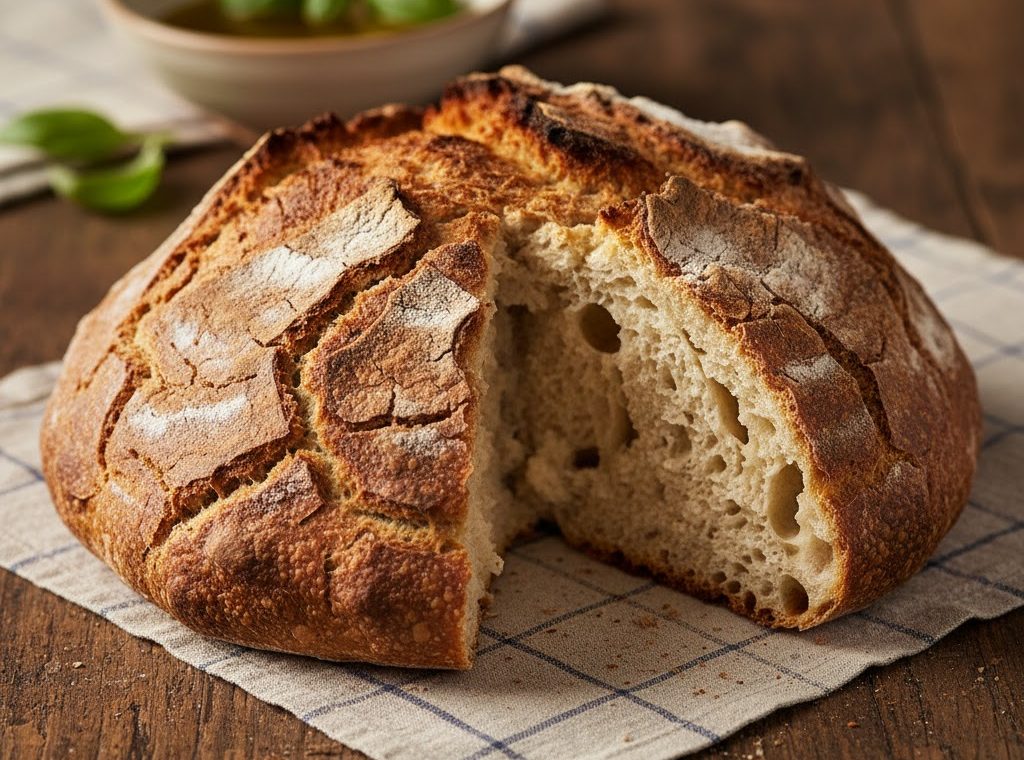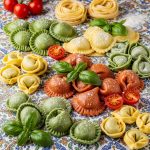Neapolitan bread is not a simple side dish. It is the daily breath of a people who learned to transform the humble into art. Bread– ‘o pane, as they affectionately call it – represents work, waiting and gratitude. Its smell, which escapes from the neighborhood ovens at dawn, mixes with the smell of freshly brewed coffee and the voices that wake up the city.
Neapolitan bread is much more than flour, water and yeast: it is a story kneaded by hands that have lived through time, with patience and respect for the rhythm of nature.

Pane Cafone: The peasant soul
It all starts in the golden fields of Campania, where durum wheat has been grown for centuries. This wheat, resistant to the southern sun, produces bread with body and character. This is the origin of pane cafone, peasant bread, so called not for lack of elegance, but for its noble rusticity.
The cafone is the bread of the people, of the day laborers, of the grandmothers who baked it once a week in stone ovens shared by the whole village. It was prepared with sourdough, left to ferment slowly, and then baked in the heat of the wood oven until it formed a thick, almost crunchy crust that could be kept for several days.
Its interior, soft and slightly acidic, kept the flavor of the earth and the smell of wood. It accompanied
What is Fresella?
Strawberry: bread of the sea and of summer
If pane cafone is the voice of the countryside, fresella is the song of the sea. It was born to feed fishermen and travelers who spent days away from home. Dry, hard bread, baked twice to resist the passage of time, the fresella was an invention of pure peasant intelligence.
It was enough to soak it in sea water or a few fresh drops to bring it back to life. Then it was covered with tomatoes, olive oil, oregano and basil: the essential flavors of the Mediterranean. Sometimes tuna, olives or capers were added, and a lunch fit for a king was ready, made with the most humble resources.
To this day, fresella is still the bread of summer, a symbol of freshness and simplicity. On the coast of Sorrento and on the islands of the gulf, it is still prepared as it was centuries ago, as a bridge between land and sea.
Bread as the language of the Neapolitan soul
In Naples, bread is not only eaten: it is respected. In ancient homes, when a piece of bread fell on the floor, it was carefully picked up and kissed before being placed back on the table. This gesture, inherited from generations, is a silent prayer: a thanksgiving for what the earth gives.
Bread is also union. It is broken, not cut. It is shared, not kept. In Neapolitan neighborhoods, the oven is a meeting point, a place where neighbors greet each other, exchange recipes and wish each other
Living tradition in Neapolitan ovens
Today, in the most authentic corners of Naples, bakers still work in the early hours of the morning. Many still use sourdough (
Pane cafone and fresella coexist with new shapes and flavors, but neither has lost its essence. They are breads born from the respect for the ingredients and from the conviction that patience is still the most powerful secret in Neapolitan cuisine.
Bread as memory and symbol
In every Neapolitan home, there is a memory that smells of bread: that of the grandmother who baked on Sundays, the father who brought a warm loaf wrapped in brown paper, or the children who waited for the first crusty piece with butter and sugar.
Neapolitan bread is not a luxury, it is a declaration of identity. It represents the
Whether it’s a strawberry dipped in oil and tomato or a slice of rustic pane cafone – it encapsulates the true essence of Naples: a city that lives between fire and sea, between work and celebration, between poverty and beauty.
In its crunchy crust and tender crumb are hidden centuries of history, love and resistance.
And every time someone breaks it and shares it, the purest tradition of Campania is reborn: that of celebrating life with a piece of bread and a lot of heart.
With infinite affection,
Your Neapolitan girl




